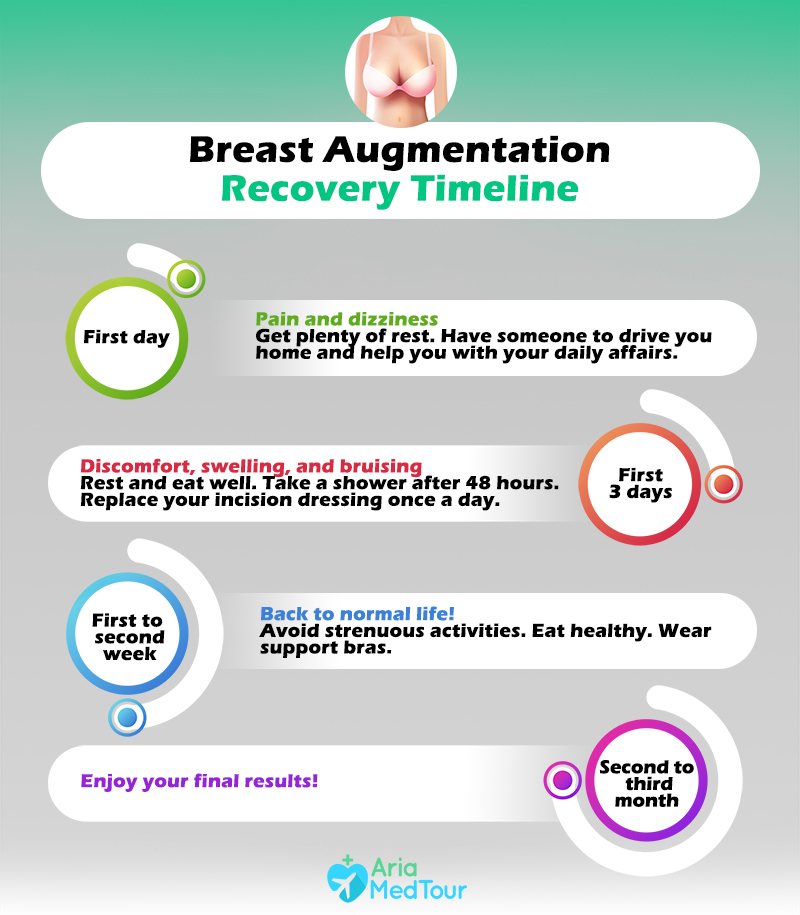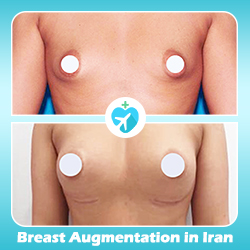Breast augmentation surgery, also known as augmentation mammoplasty, is a surgical operation performed by a clinical cosmetic surgeon to increase breast size or change its shape.
Going through with breast augmentation surgery is a tough decision to make. There are a lot of factors that need to be taken into account in the recovery phase and the lack of a clearly defined process for recovery management after surgery might end up confusing a lot of people.
From swelling and infection to managing your scar tissue and handling a possible rupture of implants, this article will serve as a complete and comprehensive guide to breast augmentation recovery after your surgery.

You should rest as much as possible to recover better after your breast surgery.
Quick post-op tips and facts for breast surgery
Here we list the most important facts and tips that need to be considered or expected immediately after surgery so that you would pull off a perfect recovery.
- After the surgery, you will feel extremely tired, which is why you need to get plenty of rest.
- Solemnly avoid heavy activities that could raise your blood pressure for the first couple of days.
- Have someone stay with you for the first 48 hours in case of any unexpected complications.
- You may feel tightness, soreness, and pain in your chest area for quite a while. Taking your medications will ease your pain.
- It is safe to shower after 48 hours but avoid still water (pools, hot tubs, etc.) for at least 2 weeks.
- After taking a shower, it is recommended to change your gauze dressings once every day. Do not touch the steri-strips on your incisions.
- In the first couple of days, you should make a note to take brisk walks on a daily basis to avoid blood clots.
- You cannot travel by airplane for the first 3 days. After that, it is safe to travel on
- If you notice warmth, redness, or run a fever, you may have an infection. Contact the clinic and explain your symptoms.
- If you develop a rash or allergic reaction to adhesives or antibiotics, contact your doctor immediately.
- For the first three months, you should be wearing a recovery bra or sports bra at all times to support your implant and keep it in place.
- Do not lift objects that are heavier than 5 pounds and avoid bending over.
- Constipation is possible because of your medications and anesthesia. Be prepared for it.
- Last but not least, always lie down on your back. Never sleep on your stomach. It is safe to sleep on your side for short periods of time. Your headrest should be higher than your body.
Breast augmentation recovery timeline
Now, let’s get to the real question: ‘How long will it take for you to get back to your normal life?’ Well, there is no simple answer to that. The implant type, its size, texture, and other bodily features are all contributing factors that affect the duration of your healing process.
Some people take one week to resume their daily activities while others may need to take several weeks. Generally speaking, you need six weeks on average to fully recover from your breast augmentation surgery. During that period, you will need ample rest, not only to alleviate your discomfort but also to make sure that your implants are not damaged or compromised in any way.
The first day after breast augmentation
Breast augmentation surgery usually takes approximately 2 hours. After the surgery, you will be taken into a recovery room for monitoring. If you show no signs of instability, you can go home.
Before leaving, your doctor will give you instructions for the days to come and provide you with the necessary prescriptions. Painkillers will rid you of the discomfort and antibiotics will help prevent infections.
When you wake up, you will feel pain and soreness in your chest and your movement will be limited. Dizziness and constipation might also occur as a result of anesthesia. It is absolutely essential to get someone to help you cook meals, move around, and even change the dressing of your implants in the first couple of days.
Avoid any heavy physical activity and do not attempt to do anything that can raise your blood pressure.
The next couple of days
The first few days will be the most uncomfortable. You will feel sharp pain and experience swelling or bruising in the surgical areas. Taking your pain medications and antibiotics will help ease your inconvenience.
In the first 48 hours after the operation, you may develop a slight fever. This is not a sign of infection, but that your body is adjusting to the implants.
Surgeons usually put sutures under the skin of your breast to give it a natural fold. These might cause a pinching sensation which will bring you pain. Do not touch them.
For the first week, cover your incisions with a gauze dressing and try to replace it at least once a day. If your incisions are covered with steri-strips, you do not need to remove them. These steri-strips are often applied with a skin adhesive, which will enable you to wash them without being removed.
After 48 hours, you can shower, but do not wash your body in still water (as in a bath, hot tub, or swimming pool.) After two weeks, you can slowly go into pools but should avoid swimming.
After the first week, you can go back to work, but remember to not engage in any heavy physical or social activities.
Weeks 3-6
Your pain and discomfort will be greatly reduced by week 3 after breast augmentation surgery. Patients are encouraged to resume their daily activities but refrain from doing anything particularly challenging to their physical strength.
In your next appointment with the doctor, the progress of your recovery will be discussed and they might give you tips as to how you may proceed from now on.
Your scars will begin to fade, but remember that they will not completely disappear.
Patients can also do some lower-body exercises like squats. Do not attempt to do push-ups or sit-ups as they will gravely damage your implants.
Continue to wear support or recovery bras to not disrupt the adjustment of your implants.
First two months after breast enlargement surgery
As you move past the recovery phase, you can stop wearing your sports or recovery bra.
The scars will eventually blend with your skin and become almost invisible to the eye. After two months, most patients will be cleared by their doctor to perform all normal activities, even the ones involving heavy physical exercises.
You should still be careful about not doing any strenuous activities that would put pressure on your implants or cause them to rupture, but your daily routine will go back to normal.
Results: when to expect final results?
A couple of months after surgery, your breast implants begin to feel and look more natural. During this period, and in order to avoid any further complications, you should set appointments with the hospital to get your implants checked.
By the eighth month, your implants will have fully settled in and you can get a good feel for how they are going to look in the years to come.
What are the side effects of surgery and how can you deal with them?
While the latest developments in plastic surgery have made the process of breast implants recovery much faster and easier, there are still things that patients need to know about the possible complications they might encounter along the way.
Much like other major surgeries, it is of vital importance to be prepared for everything and know the side effects that might cause you trouble during your recovery period. Here, we will list the most troublesome and somewhat probable aspects of breast augmentation recovery and ways to deal with each one of them.
Pain
The most common side effect of breast augmentation is mild to moderate discomfort and pain. This may continue up to two months after the surgery, and it usually involves feeling tightness and pressure in the chest area.
Pain is a sign that your breasts are adjusting to the implants and there is no need to worry.
While medications are going to drastically ease the pain, your ultimate weapon through the first couple of weeks is tolerance. By the time you reach the fifth week, most of the inconvenience and nausea caused by pain will have gone away.
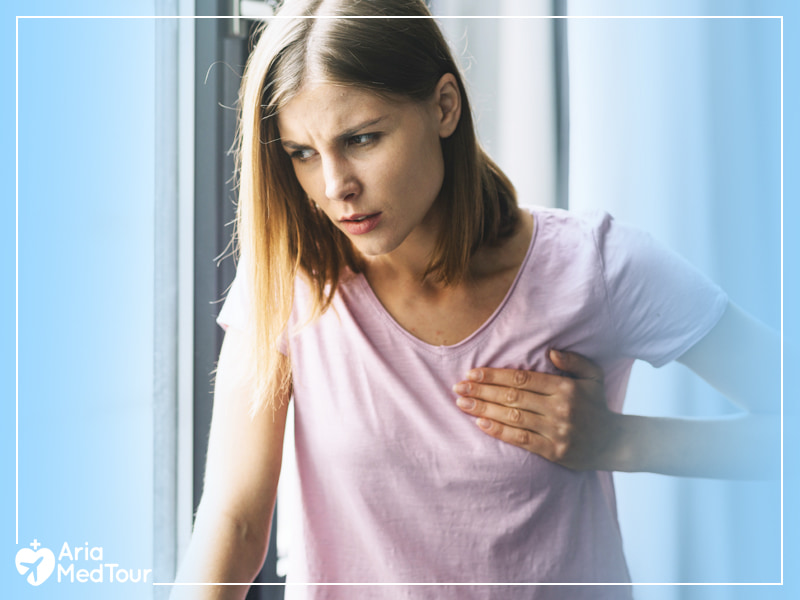
Pain is normal during breast aug recovery, and it shows that your breasts are adjusting to the implants.
Swelling and bruising
Every patient will experience swelling and bruising, so it shouldn’t be a cause for concern. In fact, swelling and bruising is your body’s natural response to invasive surgeries.
Swelling and bruising reach their peak in the first 48 hours after surgery, but your medications will make things easier.
The good news is that after the first two days, the symptoms will begin to subside and fade away. In a week or so, you will be rid of the swelling completely.
In the meantime, make sure to keep the temperature down and avoid taking any blood thinners. Applying ice packs is another good way to significantly reduce swelling.
Tiredness
Surgical trauma can cause fatigue and tiredness, especially in the first few days of breast augmentation recovery. With breast augmentation surgery, the movement of your arms will be limited and you will also have difficulty getting up and moving around.
It is recommended to prepare a recovery spot in your house before the surgery, where you will be more comfortable and receive plenty of rest. For the first seven days, try to avoid physical activity as much as you can.
Bleeding
Some patients might experience bleeding around their implants after the operation. This may even occur up to two weeks after surgery. If and when it does, go back to the hospital and have the problem addressed.
The risk of bleeding is usually less than 1% but it can damage your implants if it is not stopped and taken care of by professionals.
Infection
When it comes to breast implant recovery, infection can be tricky. Again, this is something that happens in less than 1% of the cases, but if it does, you need to immediately contact your plastic surgeon and go to the hospital.
If you are not recovering as expected after two or three weeks, you may develop a fever and start to feel really unwell. A mild infection can be treated with antibiotics, but if it grows out of control, you need to have the implant removed.
If it comes to that, you should wait a couple of months to fully treat your infection and then seek to undergo surgery again.
Capsular contracture
After the surgery, your immune system creates a capsule (scar) that fixes the implant in its place. This is a natural response from your immune system and most of the time, your breast will feel soft and look normal. In some rare cases, though, this capsule begins to contrast with the implant and makes it feel firmer than usual. As of now, the reason for this is unknown.
If capsular contracture grows abnormal, in both texture and shape, you are going to have to remove the implant and release the capsule.
The odds of capsular contracture will be reduced with reoperation and a new implant, but generally speaking, you don’t need to worry about this phenomenon.
Implant rupture
In case of trauma or pressure, the silicone outer shell of an implant can leak and rupture. This can also occur as a result of your implant naturally aging after several years. When saline implants rupture, the saltwater is absorbed by the body. That is not the case with silicone implants, which is why it takes patients longer to notice that their gel has been compromised.
The doctor must surgically remove the implant and even take out the scar capsule by making an incision. If you have implants in both of your breasts and one ruptures, the surgeon will probably take out both of them. If you decide to have new implants, the surgeon can apply them during the same operation.
Signs you’re not recovering well after breast augmentation
There are signs that indicate you might not be recovering well from your surgery. Infection, bleeding and high fever are lucid signs that something is wrong with your implants.
Here are some other symptoms that suggest you are not experiencing a healthy recovery and should call your plastic surgeon for further instructions:
- Severe itching at the site of incisions, sutures, or wounds (mild itching is normal)
- Intolerable nausea, vomiting, and constant dizziness
- Numbness in other areas of your body (other than your breasts and implants, where mild numbness is to be expected)
- Extreme pain despite taking your medications
- Extreme bleeding that doesn’t subside
- Racing heartbeat and shortness of breath
Breast augmentation aftercare tips
Surgical developments and medical advances have paved the way for experiencing a safe and smooth surgery. Be that as it may, paying heed to aftercare tips is an absolute necessity if you wish to get the best results out of your surgery.
Here we list some of the things that will help you along the way in your breast implant recovery period.
Consultation and instructions
Patient consultation is an important part of the surgical process, where you will ask all your questions before the actual operation. After the surgery, your surgeon will give you the necessary instructions for breast augmentation aftercare and give you medications for pain and other side effects.
The doctor will usually set an appointment for a few days after the surgery to check your implants and replace your bandages.
These appointments may continue up to one year after the surgery in order to make sure that your implant is as satisfactory as it is comfortable.
Medications
Painkillers and antibiotics prescribed by your plastic surgeon will help with the pain and prevent infection. Certain medications that cause bleeding (like Mortin, Aleve, etc.) should be avoided. Try to stick with your prescription and take your medicine regularly.
Always take your pills after you’ve eaten. This is recommended for the first couple of days after the surgery to avoid nausea and other disturbing side effects.
Dressing (bandages, bras, etc.)
Your chest area will be covered with gauze dressings and bandages after the surgery and you will be required to wear a bra all the time to hold your dressing and incisions in a stable position.
It is highly recommended to buy recovery bras as they are specifically designed for implant stability and post-op comfort. Support bras are also an option, but seriously avoid underwire bras for at least 3 months after your surgery as they will damage your implants and wounds.
For more tips on how to choose bras, you can read a guide to choosing bras after breast augmentation.
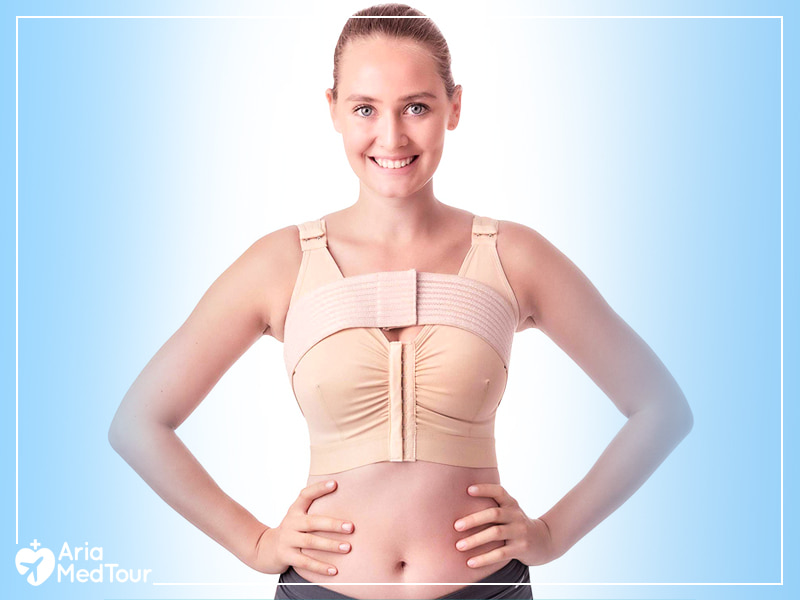
Post-surgery bras help you get through the recovery period much easier.
Wound care
Your incisions may bleed for a while after the surgery. Try to clean your wound dressing every day. After 48 hours, it is safe to take a shower. Remove the dressing but do not touch the steri-strips on your incisions. Their design will allow you to wash over them. After taking a shower, put on new gauze dressings and try to change them every day.
As mentioned earlier, swelling is normal during the recovery after breast implants. If it doesn’t subside after a couple of days, your doctor will apply wraps and implant stabilizers during your next appointment.
Slight redness or drainage on your incisions is normal. If this increases substantially and you get a serious fever, contact your doctor and ask for instructions.
Diet: what to drink or eat?
As transparent as it might sound, you need to eat healthy after your operation. Without enough nutrition, your wound will not heal properly and your recovery after breast implants will not have the support of different vitamins, proteins, and their healing properties.
Drinks
Staying hydrated is absolutely essential. Drink lots of non-carbonated and caffeine-free fluids. Herbal tea, Lemonade, and orange juice are highly recommended drinks for breast augmentation aftercare that should be consumed on a regular basis.
Foods
It is recommended to consume bland and nutritious meals for the first couple of days.
Cashews, almonds, pine nuts, etc. are approved remedies for skin tissue. Fruits that boost your immune system can greatly enhance the quality of your recovery period. Consuming apples, oranges, kiwis, and bananas will also help you with nausea.
The consumption of eggs, rice, and soy are also highly recommended. Seafood, sweet potatoes, and beans will also boost your immune system and energy levels.
Try to eat in smaller portions to help both your digestion and immune systems.
Nutritious supplements
Supplements are a good choice for boosting your immune system and your body’s healing capacities, but make sure that they don’t interfere with your medications by checking with your plastic surgeon.
Multivitamin pills, ZMAs, Bromelain, etc. will help you receive ample nutrition for your recovery after breast implants.
Your diet plays a crucial role in speeding up your healing after breast surgery.
What to avoid eating or drinking after breast augmentation surgery?
Eating or drinking unhealthy food will sabotage your breast augmentation recovery and slow down your healing process, so you should try to steer clear of them. Here we list some of the foods and drinks that may be detrimental to your body before or after surgery.
Salt
Consuming too much salt will raise your blood pressure and put a strain on your heart and blood vessels.
Try to avoid salty food or snacks as much as you can for at least two weeks before surgery and a month after it.
Alcohol
Two weeks prior to your operation, the doctor will ask you to stop drinking wine and alcoholic beverages.
Remember that consuming alcoholic beverages in the post-op period is like swallowing a mouthful of poison, as it will both affect your healing process and damage your implants.
Caffeine
Caffeine stimulates your nervous system and gives you a feeling of agitation. This could give you nausea and more discomfort with your pain after surgery.
Cutting down on caffeine intake is also essential to stop interference with blood pressure and anesthesia.
Fast food
You should avoid fast food or any high-calorie food that can disrupt or adversely affect your digestion for at least a month after your surgery.
Daily activities/habits
While most people resume their daily activities after a week or so, it is important to know your limits and what you can or can’t do during your breast augmentation recovery.
If you decide to get the implant, take a one-week leave from work. You should be able to resume many of your daily activities after that period of time, but you must avoid heavy activity or exercise for the first two months.
Sleeping and resting
Resting is really important, but don’t give yourself bedsores! You should get up every two hours or so and slowly walk for ten minutes.
Try not to sleep flat on your back. Resting in an upright position accelerates your recovery speed. NEVER sleep on your stomach to avoid damaging your implants. You can check out our blog post on how to rest during breast implants recovery for more information.
Showering
You can shower after 48 hours, but avoid baths, hot tubs, or swimming pools for at least two weeks. Even if you can’t resist a bath, do not soak your upper body in the water.
Driving
Driving will put pressure on your wounds after the surgery, which is why it’s important to have someone with you to give you a ride home.
Most people can drive after a week, but if at all possible, avoid it for the first month.
Lifting
Lifting objects heavier than 5 pounds (2.3 kilograms) will put pressure on your implants and disrupt your healing process.
Try to take care of your housework before surgery and have someone with you to do the chores. (This is especially important if you have kids.)
Sun exposure
Exposing your breasts to sunlight can damage your implants and make the incisions swell. If you have to leave the house, apply sunscreen to your chestal area 30 minutes before exposure.
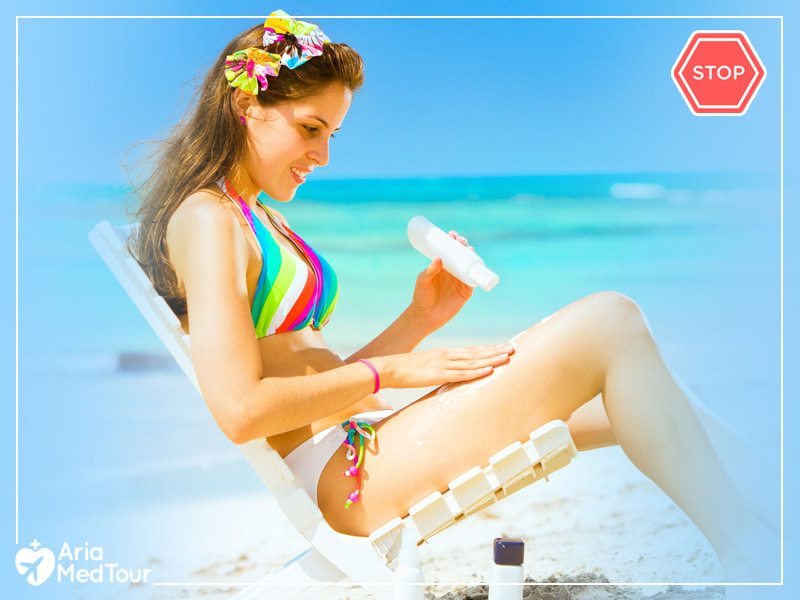
Avoid sun exposure after getting a boob job for at least 1 month.
Massages
If necessary, your surgeon might also give you instructions on how to lightly massage your implants. Do not attempt to massage your breasts without previous instructions as you may end up damaging the integrity and causing a rupture.
Movements of arms and legs
Your arms will have limited movement after surgery, which means that you cannot take care of many personal chores by yourself. Having someone around to help you is vital in the first couple of days.
You will also have difficulty walking, but you’ll slowly be able to walk normally by the end of the first week.
Sex
As for intimate physical contact, you should wait at least 2 weeks after surgery to have sex again. Remember that your incisions and wounds are prone to bleeding and infection and any strenuous activity can slow down your recovery.
Physical and sports activities
Engaging in activities that put pressure on your upper body parts will damage your implants, especially in the first two weeks. Generally, you should avoid doing anything too arduous or heavy.
Walking
Some people tend to think that after breast implants, they should avoid any movement. The truth is, you need to take brief 10-minute walks every few hours to maintain a good
Running
It goes without saying that running can damage your implants and put pressure on your wounds and incisions. Avoid running and jogging. for at least two months after surgery.
Swimming
If – after two weeks – you decide to go to the pool, you can pace back and forth in a slow manner but you can’t swim or dive without damaging your implants.
Exercising
Can’t resist the urge to do a little bit of exercise? Well, you can do squats and other lower-body exercises, but avoid push-ups and sit-ups. Also, avoid bending over as much as you can.
Beginning 6 to 8 hours after the surgery, it is recommended for patients to raise their arms over their heads in a slow manner. This is an hourly exercise that should be done for the first three weeks while the patient is awake.
Smoking
Plastic surgeons are always talking about the adverse effects of smoking on cosmetic procedures. If you wish to experience a healthy and smooth breast augmentation recovery, you must quit smoking for some time.
How does smoking affect implants?
Nothing is more detrimental to plastic surgery results than smoking and its compressing effect on your blood vessels. Nicotine causes blood vessels to constrict and that puts you at risk of surgical complications.
Smoking after surgery will lead to blood clots, infections, increased pain, and ultimately, complete failure of implants.
When and how long should I quit smoking?
Your plastic surgeon will ask you to quit smoking a month before the surgery. You should avoid smoking for at least two months after surgery to make sure that it doesn’t adversely affect your implants and new skin tissues.
Breastfeeding
According to an Institute of Medicine (IOM) report, women who had undergone breast surgery were at least three times as likely to have problems with breastfeeding. There have also been raised concerns about the breast milk itself, but there hasn’t been enough research to resolve this matter.
Can you breastfeed during your breast augmentation recovery time? The short answer is: Yes. In most cases, women don’t have a problem with breastfeeding after the surgery.
Consultation before surgery is really important in this situation. If your incisions were made under the breasts in the inframammary fold, then your nerves are preserved and you shouldn’t have any problems with breastfeeding. This is the most common method applied in breast augmentation surgery. But sometimes, and for cosmetic reasons, the cut is made near your areola – close to your armpit – which can interfere with the nerves responsible for your milk supply.
The reason behind augmentation surgery is just as important. Some women undergo surgery to boost their flat-shaped breasts, which is regarded as an indicator of breastfeeding problems in the first place, regardless of the type of breast implant surgery they ultimately decide to receive.
There are many widespread myths about plastic surgery, one of which claiming that people who receive breast implants will not be able to breastfeed. While some problems may occur, there is no indication whatsoever that women will permanently lose their ability to produce lactic fluid.

You can safely breastfeed your baby after getting breast implants surgery done.
Childcare after breast implants surgery
Mammoplasty is a major surgery and breast augmentation recovery is a delicate period of time. If you have kids, you won’t be able to properly take care of them for the first two weeks without damaging your healing process.
For people who have infants or small kids, you will not be able to carry them around. In that case, seek help from a close friend or relative to assist you with your housework and chores until you get back on your feet.
Checkup after breast implants surgery
There is a wide misconception that breast implants need to be replaced every 10 years. While some women may not be as happy as before with their implants as they age, most people will be satisfied with their implants for many years.
That being said, it is still a good idea to have a checkup from time to time and make sure that everything is in its place.
Why have a checkup?
While your implants will hold their integrity for years to come, your body will age and bring along some changes. Some women may not be satisfied with the shape of their breasts. In that case, your surgeon can help you with an uplift or a secondary operation.
Also, silent ruptures may be a cause for concern. Improvements in silicone implants have reduced the chances of rupture, but it can still occur. A rupture will cause pain, swelling, and changes in breast shape.
Silent ruptures show no symptoms. So, after your breast augmentation recovery period is over, it is recommended to take a breast MRI and make sure the implants are in good shape. Breast MRIs only indicate the integrity of your implants and do not utilize i.v. contrast (used for detecting breast cancer) and should be taken at least once every year after surgery.
Conclusion
If you follow instructions and stay true to the instructions mentioned in this article, you will experience a smooth and fast recovery after your breast augmentation surgery. Granted, reading all of these tips can make you feel overwhelmed, but as you lean into the process, things will be easier to manage and the discomfort will slowly – but surely – fade away.
If you have any questions or need consultation in regard to breast augmentation recovery and aftercare, be sure to contact your surgeon and seek assistance

